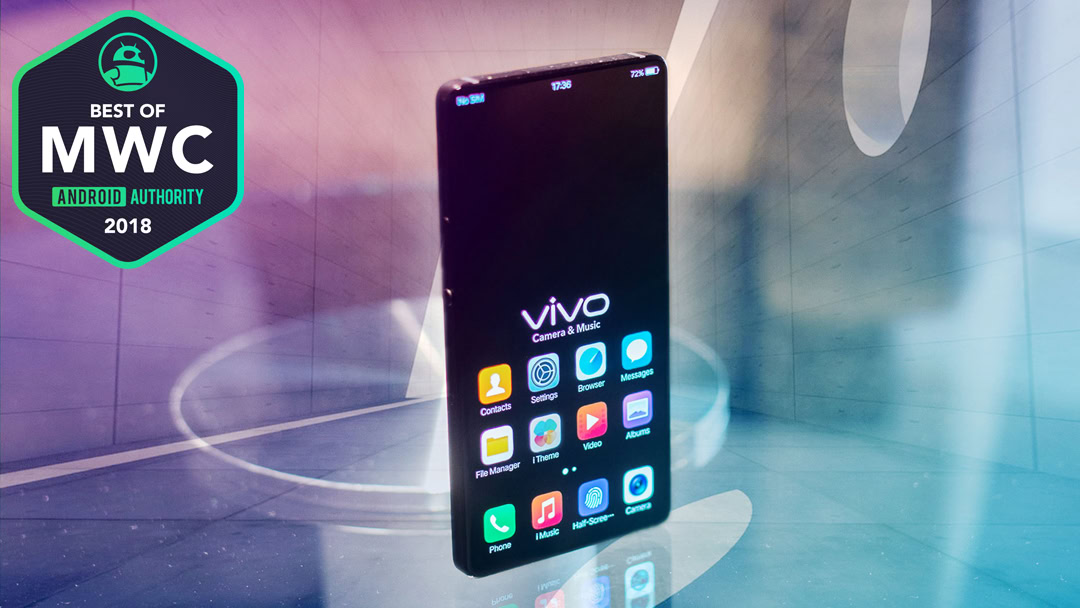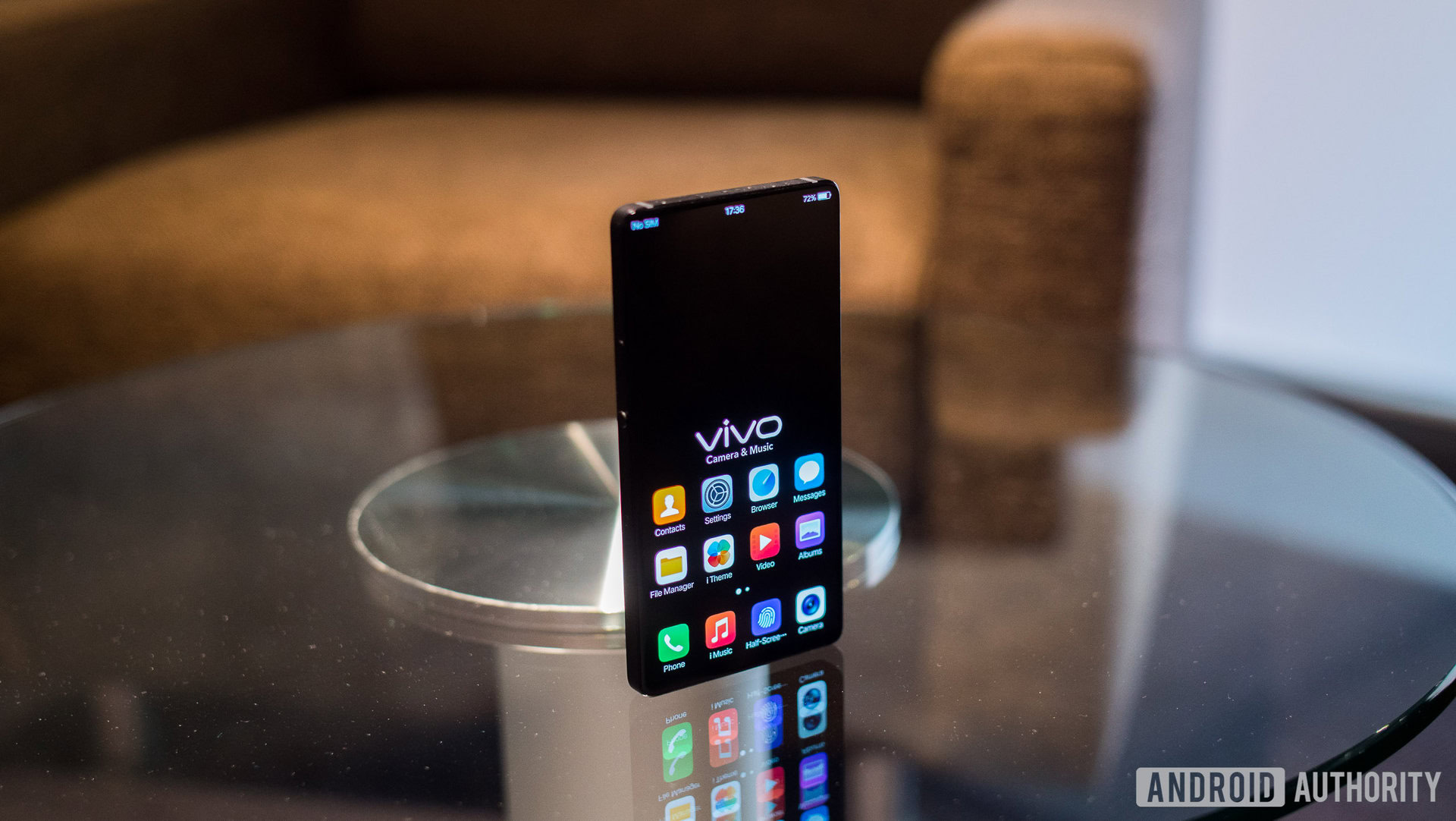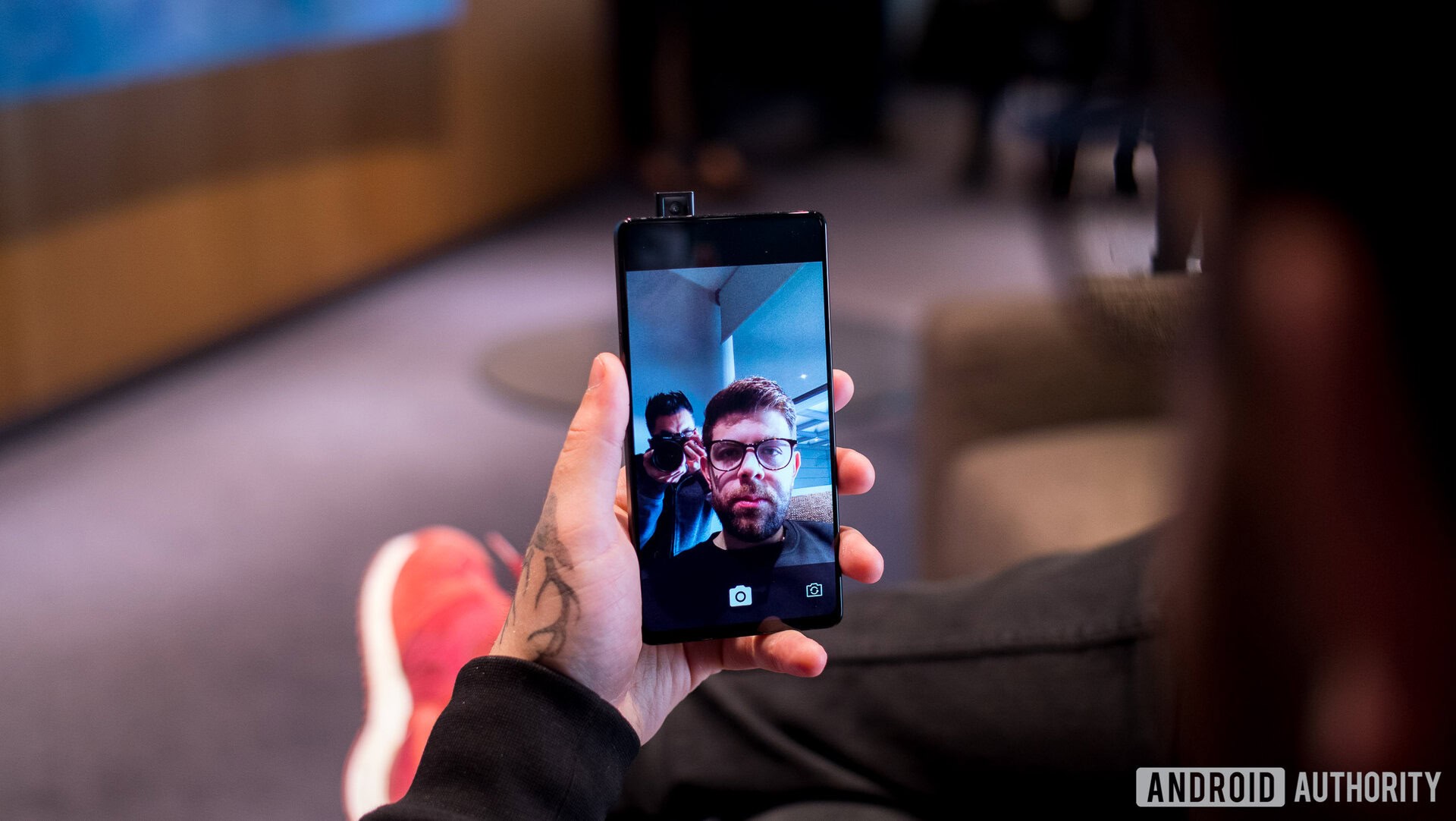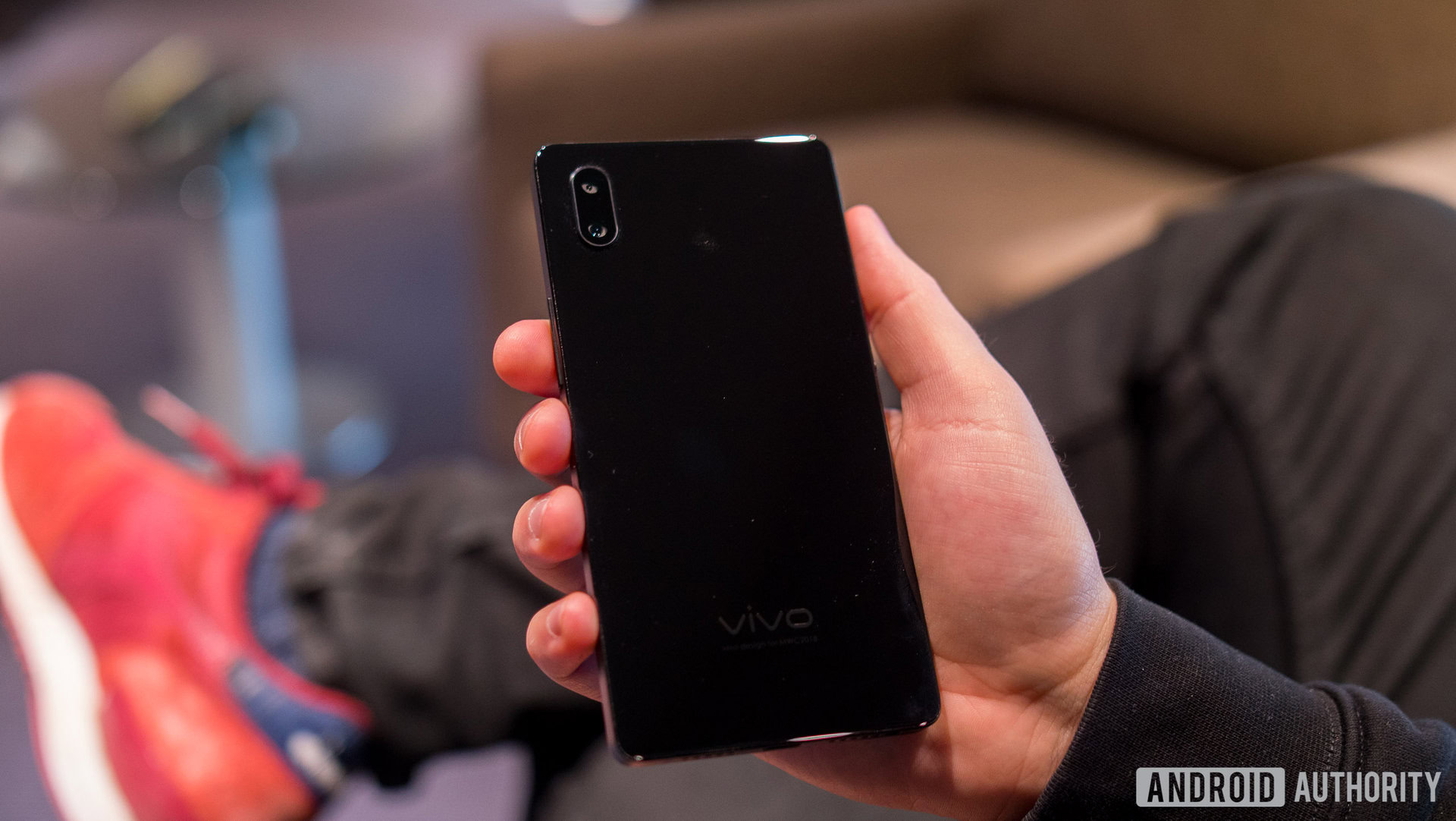Affiliate links on Android Authority may earn us a commission. Learn more.
vivo APEX hands-on: The next step in the evolution of fingerprint sensors
Published onFebruary 25, 2018

Whether because of the war on bezels or because it’s simply more ergonomic, it seems like more and more smartphone manufacturers are moving fingerprint sensors to back of their phones. Most flagships have them. The HTC U11+ recently opted for a rear fingerprint scanner for the first time, and the newly announced Galaxy S9 has one as well (in the right place this time, too). But vivo is going in a different direction.
Read Next: vivo V9 review: An iPhone X clone with AI selfies
Only a month after unveiling the X20 Plus UD at CES 2018, which featured a fingerprint scanner underneath the display, vivo is now showing off the APEX FullView Concept Phone, which takes the idea even further.

Where the X20 Plus UD had a glowing fingerprint on the display with a sensor embedded underneath, this new concept phone makes the entire bottom half of the screen capable of reading your fingerprint. Instead of a small light shining where the sensor was, this new concept phone shines a large block of light capable of reading your fingerprint anywhere across the phone’s bottom half.
The entire bottom half of the screen capable of reading your fingerprint
This phone is basically all screen, with almost no bezels, so finding a spot on the screen to unlock the phone is a non-issue. The top and side bezels measure only 1.8mm while the bottom bezel is 4.3mm. vivo claims that if the bottom bezel matched the other three, the phone would have a screen-to-body ratio above 98 percent.
This is good news if you love watching videos on your phone, but so much screen means there isn’t much room for other things normally found on the front of a phone. vivo had to hide the proximity sensor under the glass, and the ambient light sensor was moved to the very top of the phone.

The front-facing camera had to move too. Unlike the solutions of Sharp, Essential, and Apple, vivo made the selfie camera rise out of the top of the phone when selected in the camera app. It rocks an 8MP sensor for crispy selfies and rises in 0.8 seconds. On the back you’ll find a dual-camera setup, but because it was a only concept vivo didn’t put any emphasis on it.
The large screen isn’t just for watching videos
Another side effect of such a large screen is having no space for a speaker, so vivo made the screen itself vibrates to produce sound using the company’s Screen SoundCasting Technology. Whether watching a YouTube video or making a phone call the audio is surprisingly clear and loud. If you’re on a phone call the APEX can also adjust the vibrations of the screen so that you can hear the person loud and clear, but anyone standing next to you won’t be able to listen in.

vivo also decided to keep the headphone jack. Even in a concept phone, that’s a good thing. vivo also included a DAC and three amps inside. It seems a little weird to go all-in on something like high quality audio, at least until you remember this is a concept phone. vivo’s not out to make money, it’s trying to prove what can be done. All of that tech is packed into a solid metal body that didn’t seem much thicker than something like the Razer phone.
The entire experience was not as accurate or quick as the single point sensor
Because of the large sensor size, you can even register two fingers to the system, so the phone only unlocks when both press firmly on the screen simultaneously. It’s clever, but not as accurate or quick as the single point sensor we tried at CES. Registering fingerprints is a little glitchy and took more than a few tries to get right. It also required pressing harder than what felt natural on the screen. At least in the demo version of the software we got to try, unlocking the phone was a bit sluggish and laggy.
The APEX FullView is a concept phone in every way, but we still came away impressed. Where the vivo X20 Plus UD was a fully functioning smartphone that even went on sale in China, the APEX FullView is more of an experiment to push the technology to its limits. It’s not ready to go to market yet, but it made us excited for the future of smartphones.